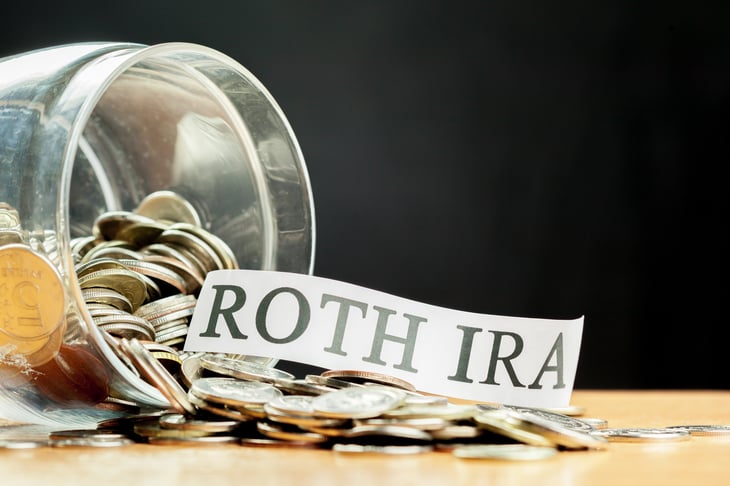
Editor's Note: This story originally appeared on NewRetirement.
When we reach a certain age we must – in order to avoid tax penalties – take required minimum distributions from IRAs, 401(k)s, and other types of tax-advantaged accounts (all retirement accounts funded with pre-tax contributions).
Until recently, the age for almost everyone was 72 (unless you turned 70.5 before the end of 2019).
However, now the age is 73 starting Jan. 31, 2023, and 75 in 2033. Here are some strategies to manage required minimum distributions (RMDs).
What Is an RMD?

Let’s break down what exactly a required minimum distribution is:
- Required – The dictionary defines “required” as deemed to be necessary. And, indeed, it is highly recommended that you make these withdrawals. If you do not, you will be charged hefty penalties.
- Minimum – You don’t need to withdraw all your money – just an amount determined by an IRS formula involving the value of your account, estimated returns, and your life expectancy. The exact distribution amount changes from year to year.
- Distribution – Distribution is just another word for withdrawal.
So, RMDs are withdrawals of an amount that is determined by the IRS that you really should make every year after turning 70.5–72 (depending on your birth year) in order to avoid penalties.
However, these annual distributions are fully taxable at ordinary income tax rates. Therefore, RMDs, and the associated taxes, can seriously erode your wealth. It makes sense to look at ways to minimize taxes where you can.
Why Are RMDs Required?

Required minimum distributions are the government’s way of recovering the tax breaks on the initial contributions to your retirement account and the years of tax-deferred wealth.
6 Strategies to Plan and Manage Required Minimum Distributions (RMDs)

For some retirees, these distributions are an essential part of their retirement income. For others, they have other sources of income and don’t need some or all of the amount of these distributions.
If the RMD is not needed, it behooves you to look at the best strategies to manage required minimum distributions and minimize the amount of the distribution or defer it and the accompanying tax hit.
These strategies should be viewed in the overall context of your retirement plan. Tax avoidance is a tactic, not an objective unto itself.
If appropriate for your situation, one or more of these strategies could help you optimize your wealth. Here are six ways you can minimize the impact of your withdrawals.
1. Qualified Charitable Distribution (QCD)

In 2015, Congress finally made qualified charitable distributions (QCDs) a permanent part of the tax code. QCDs are a valuable tool for those who are at least 70 ½, who do not need to use the money themselves, and who have charitable inclinations.
The QCD rules allow you to donate up to $100,000 of your RMD to a qualified charitable organization. The amount given to the charity is not taxable, though there is no additional deduction for the charitable contribution.
QCDs will lower your tax hit and allow you to fulfill your charitable intentions at the same time.
2. Qualified Longevity Annuity Contracts (QLACs)

Qualified Longevity Annuity Contracts (QLACs) can be purchased within an IRA or 401(k) account and allow the account holder to delay RMDs until as late as age 85.
A QLAC is a newly-created product that is a fixed-rate deferred annuity, and payments can begin at any age up to age 85. Those who purchase a QLAC can use it in conjunction with their employer-sponsored 401(k) or other qualified plan and start receiving payments much later in life than other investment products allow.
Potentially a good idea in theory, using it to defer RMDs may or may not be a good idea in reality. While nobody likes the idea of paying taxes on their RMDs, the bigger issue is whether this will be beneficial to you over time in terms of your overall retirement planning.
A thorough analysis should be done prior to going ahead with a QLAC or any other annuity product. You can learn more about QLACs here.
3. Working After Age 72

There can be a lot of benefits to working well past the traditional retirement age.
If you are working after the age at which you would normally be required to take an RMD, you do not need to take them from your current employer’s 401(k) (assuming that you do not own 5% or more of the company and that your employer has made the election to allow this deferral of RMDs).
One potential strategy is to do a reverse rollover of any traditional IRA money to your current employer’s plan. This will give that money this same deferral from RMDs.
A few things to note.
First, your employer’s plan must allow for such rollovers. Second, only money that was originally contributed on a pre-tax basis is allowed. This could include money rolled over from a prior employer’s 401(k) into the IRA.
Lastly, you will want to perform some due diligence on your current 401(k). Does it offer solid investments and low costs? Avoiding RMDs is a good thing, but not at the expense of moving the money to a lousy 401(k) plan.
4. Roth IRA Conversions

Pre-tax money held in a traditional IRA account can be converted to a Roth IRA account.
Roth IRAs are not subject to RMDs for you or for a spousal beneficiary who inherits the account. You might consider converting some or all of your eligible traditional IRA assets prior to the onset of RMDs.
Money converted to a Roth IRA is fully taxable in the year converted. The impact of these taxes paid now must be weighed against the tax savings down the road to determine whether or not this is a good strategy for you.
5. Roth 401(k) Accounts and Inherited IRAs

Inherited Roth IRAs left to non-spousal beneficiaries and Roth 401(k) accounts are also subject to RMDs, though these distributions are not taxable.
They do, however, lose the tax-free protection of the Roth. In the case of the Roth 401(k), it can be rolled over to a Roth IRA and it will get the same treatment.
Another source of potential RMDs are inherited IRAs.
Beneficiaries younger than 70 ½ might need to take RMDs if the original account owner was taking them prior to their death, but the beneficiary would take the RMDs based upon their own age, allowing them to take smaller distributions and to stretch the tax-deferred nature of the account for a longer period of time.
6. Strategize About Which Account to Withdraw From

If you have multiple IRAs, you must calculate each account individually, but you can take your total RMD amount from one account or several.
This can be useful if some of your accounts are doing well while others are doing poorly.





Add a Comment
Our Policy: We welcome relevant and respectful comments in order to foster healthy and informative discussions. All other comments may be removed. Comments with links are automatically held for moderation.